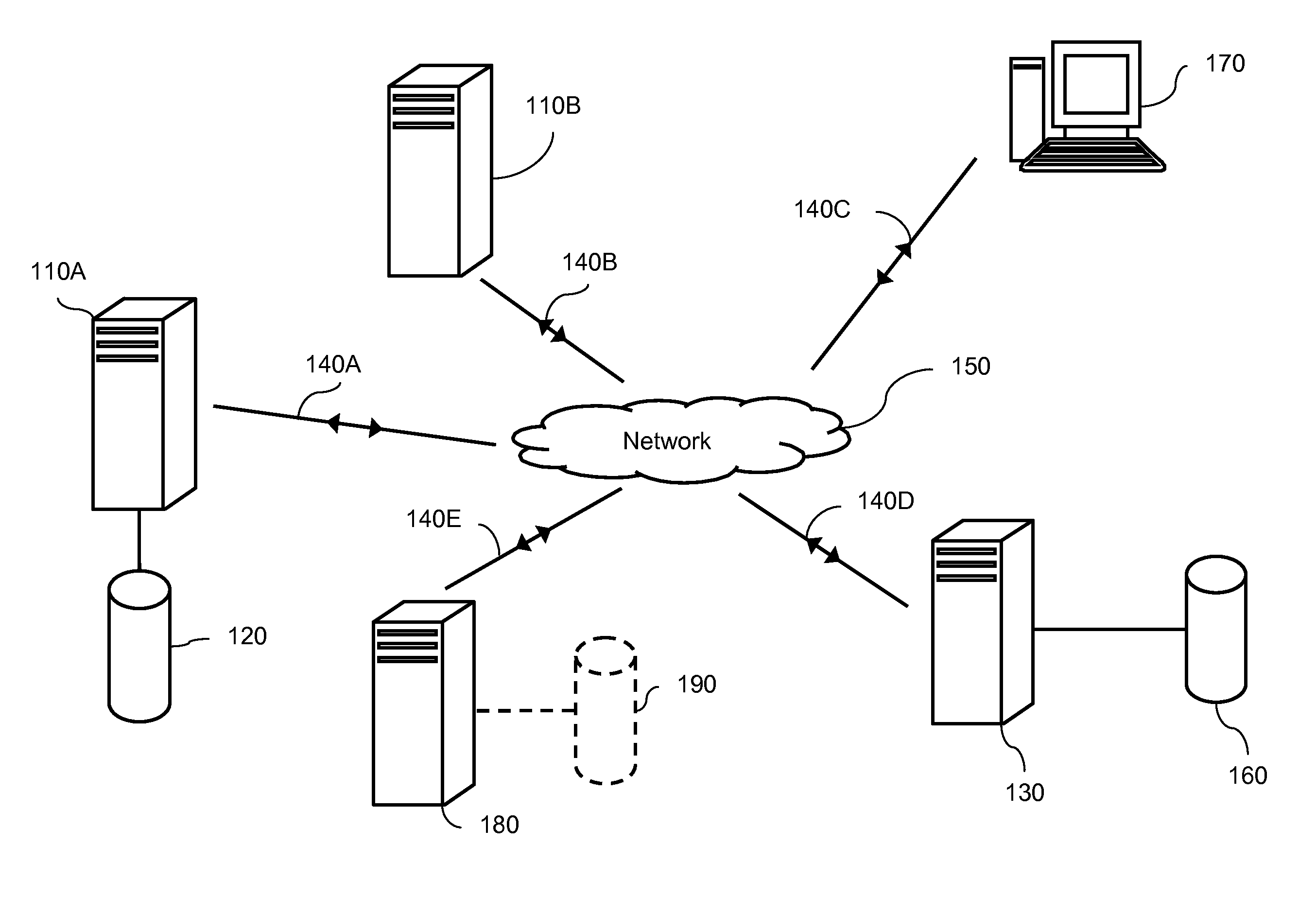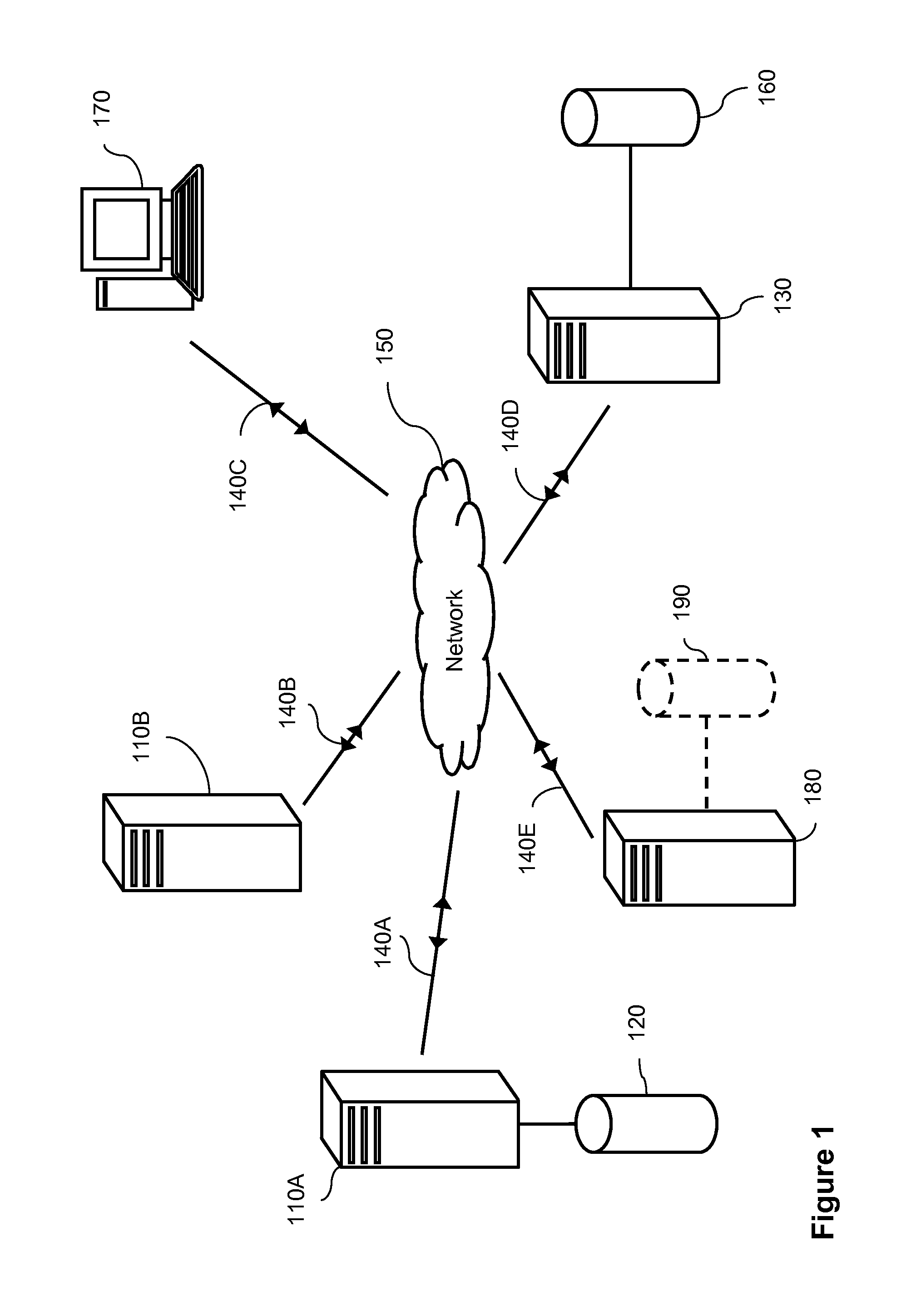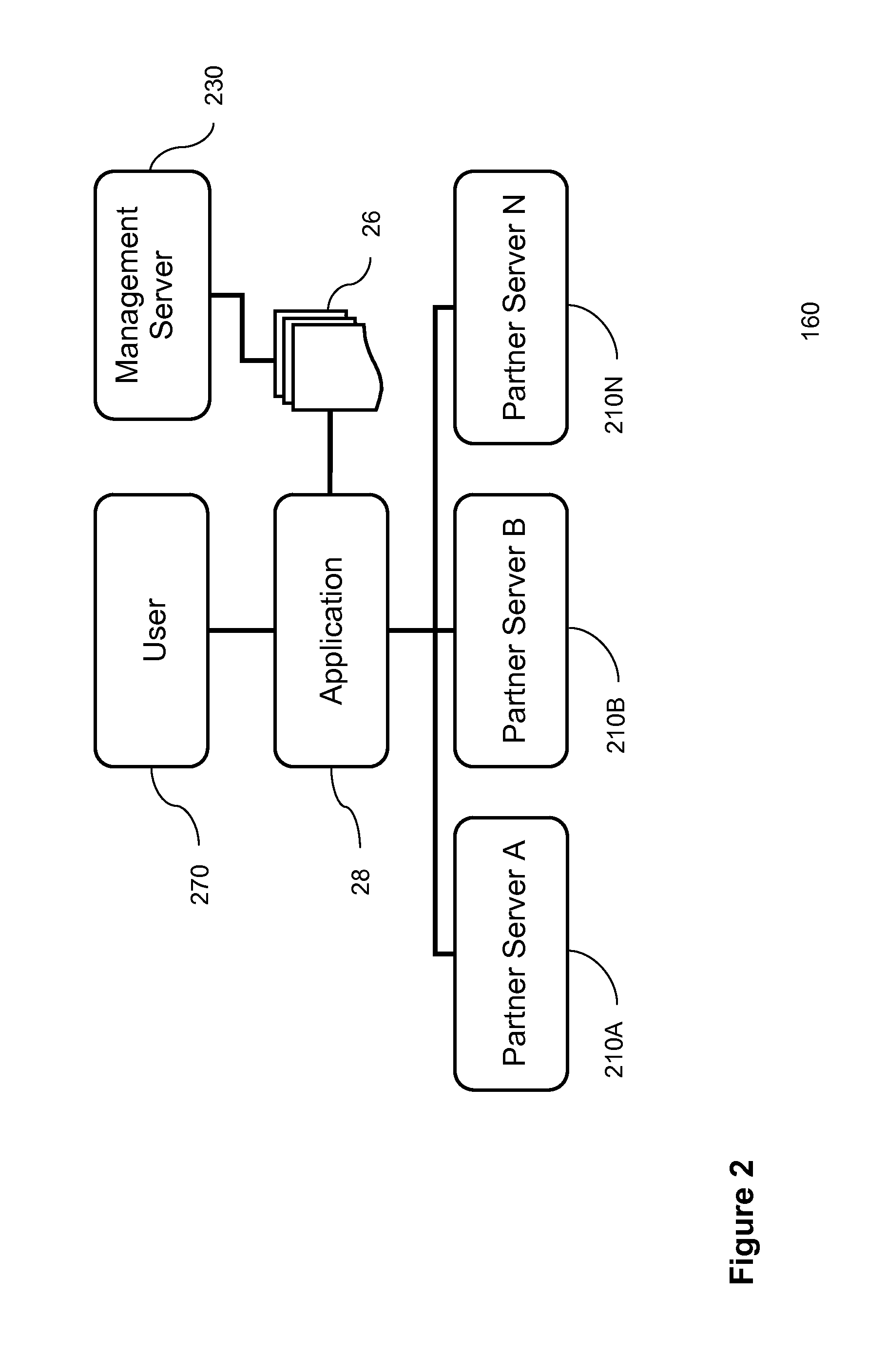Server management systems
- Summary
- Abstract
- Description
- Claims
- Application Information
AI Technical Summary
Benefits of technology
Problems solved by technology
Method used
Image
Examples
Embodiment Construction
[0092]FIG. 1 shows an exemplary network arrangement for use with the management method and system of the present invention. The components shown in FIG. 1 represent a necessary simplification of an actual network arrangement in order to clearly explain the operation of the present invention. Hence, such an arrangement should not be seen as limiting and the skilled person would understand that any known network topology with any number of devices may be used.
[0093]FIG. 1 shows a number of computer systems connected to a central network 150. Central network 150 may comprise any network arrangement within the art, including a local area network (LAN), a wide area network (WAN), or a combination of different network types, such as an internet or the Internet. Such a network may comprise any number of gateways, bridges or routers and may operate according to any known protocol, with wired and / or wireless communication between nodes. In the present description, the network will be presume...
PUM
 Login to View More
Login to View More Abstract
Description
Claims
Application Information
 Login to View More
Login to View More - R&D
- Intellectual Property
- Life Sciences
- Materials
- Tech Scout
- Unparalleled Data Quality
- Higher Quality Content
- 60% Fewer Hallucinations
Browse by: Latest US Patents, China's latest patents, Technical Efficacy Thesaurus, Application Domain, Technology Topic, Popular Technical Reports.
© 2025 PatSnap. All rights reserved.Legal|Privacy policy|Modern Slavery Act Transparency Statement|Sitemap|About US| Contact US: help@patsnap.com



